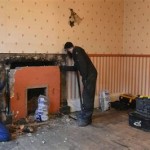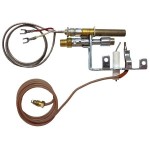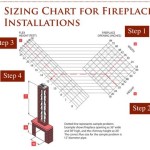Understanding the Outdoor Fireplace Firebox: A Comprehensive Guide
The allure of an outdoor fireplace is undeniable. It extends living spaces, provides warmth on cool evenings, and creates a focal point for gatherings. At the heart of any outdoor fireplace lies the firebox, a critical component that directly impacts the fireplace's performance, longevity, and safety. This article explores the key elements of an outdoor fireplace firebox, outlining its functions, materials used in its construction, factors influencing its design, and essential considerations for maintenance and safety.
The primary function of the firebox is to contain the fire. This sounds straightforward, but it encompasses several essential aspects. First, it must safely contain the flames and embers, preventing them from spreading beyond the designated area. Second, the firebox needs to withstand extreme temperatures without degrading or failing. Third, its design influences airflow, which directly affects the efficiency and quality of the burning process. Finally, the firebox contributes to the overall aesthetic of the fireplace, integrating seamlessly with the surrounding landscape.
The design and construction of the firebox are paramount for both safety and efficiency. A well-designed firebox will not only contain the fire safely but also promote proper combustion, maximizing heat output and minimizing smoke production. These factors contribute to a more enjoyable and environmentally responsible outdoor fire experience.
Materials Commonly Used in Firebox Construction
The materials used to construct a firebox must be exceptionally durable and heat-resistant. Several materials are commonly employed, each with its own advantages and disadvantages. The choice of material will depend on factors such as budget, desired aesthetics, and the expected frequency and intensity of use.
Fire Brick:
This is perhaps the most traditional and reliable material for firebox construction. Fire brick is specifically manufactured to withstand extremely high temperatures without cracking or crumbling. It possesses excellent thermal mass, meaning it absorbs and retains heat efficiently, radiating it outwards to provide sustained warmth. Fire brick is generally used to line the interior of the firebox, protecting the outer structure from direct exposure to the flames. The density and composition of fire brick varies, influencing its thermal properties and resistance to thermal shock. Properly installed and maintained fire brick can last for many years, making it a sound investment.Refractory Mortar:
This specialized mortar is used to bind fire bricks together. Unlike standard mortar, refractory mortar is formulated to withstand high temperatures without breaking down. It must be carefully selected to be compatible with the type of fire brick being used. Proper application of refractory mortar is crucial for creating a strong and airtight firebox, preventing gaps and cracks through which heat and embers could escape. The longevity of a firebrick firebox is heavily dependent on the quality and application of the refractory mortar.Concrete Blocks:
Concrete blocks can be used as the structural framework for the firebox, providing a solid base for the fire brick lining. While concrete itself is not particularly heat-resistant, the fire brick lining protects it from direct exposure to the flames. Concrete blocks offer a cost-effective way to build the outer walls of the firebox and can be easily integrated into various design styles. Reinforcing the concrete block structure with steel rebar can further enhance its strength and stability.Steel:
Steel is sometimes used in the construction of fireboxes, particularly for prefabricated units. Steel fireboxes are typically lined with fire brick or other heat-resistant materials to protect the steel from warping or melting. Steel offers good structural strength and can be formed into various shapes and sizes. However, it is essential to use high-quality, heat-resistant steel that is specifically designed for fireplace applications. The thickness of the steel is also a critical factor, as thinner steel may be more susceptible to warping under extreme heat.Cast Iron:
Cast iron is another durable material used in some prefabricated fireboxes and fireplace inserts. Like steel, cast iron possesses good structural strength and heat retention properties. However, cast iron can be more brittle than steel and may be more prone to cracking if subjected to sudden temperature changes. Cast iron fireboxes are often heavier and more expensive than steel or concrete block options.Key Design Considerations for Optimal Performance
Beyond the materials used, the design of the firebox plays a crucial role in its performance. Several factors influence how efficiently the fire burns, how much heat it produces, and how much smoke it generates. Careful consideration of these design elements is essential for creating a functional and enjoyable outdoor fireplace.
Firebox Size and Shape:
The size of the firebox should be appropriate for the intended use and the size of the fireplace opening. A firebox that is too small may not provide sufficient space for a good fire, while a firebox that is too large may waste fuel and produce excessive smoke. The shape of the firebox also influences airflow; a slightly tapered shape, wider at the bottom and narrower at the top, can help to concentrate the heat and improve combustion. The depth of the firebox impacts the burning characteristics. A deeper firebox accommodates larger logs, while a shallower firebox might require more frequent tending.Airflow and Ventilation:
Adequate airflow is essential for complete combustion and minimizing smoke production. The firebox should be designed with vents or openings near the bottom to allow air to enter and feed the fire. The size and placement of these vents directly influence the intensity of the burn. Insufficient airflow can lead to smoldering and excessive smoke, while excessive airflow can cause the fire to burn too quickly and inefficiently. The chimney also plays a crucial role in airflow; a properly sized and designed chimney creates a draft that pulls air through the firebox and carries the smoke away. The relationship between the firebox ventilation and the chimney draft is critical for optimal performance.Smoke Chamber and Damper:
Above the firebox, a smoke chamber collects the smoke and funnels it into the chimney. The shape and size of the smoke chamber can influence the efficiency of the draft. A smooth, tapered smoke chamber promotes a better flow of smoke. A damper, located above the firebox and below the smoke chamber, controls the airflow through the chimney. When the fireplace is not in use, the damper can be closed to prevent drafts and heat loss. However, it is essential to open the damper fully before lighting a fire to ensure proper ventilation. A malfunctioning or improperly adjusted damper can significantly reduce the fireplace's efficiency and increase the risk of smoke entering the surrounding area.Firebox Depth and Angle:
The depth of the firebox influences the size of the logs that can be accommodated and the overall aesthetic balance of the fireplace. The angle of the back wall of the firebox can also affect the reflection of heat and the overall efficiency of the burn. A slightly angled back wall can help to direct heat forward and maximize its radiant effect. Careful consideration of these details contributes to a more functional and visually appealing fireplace.Maintenance and Safety Considerations for Long-Term Use
Proper maintenance is essential for ensuring the longevity and safety of an outdoor fireplace firebox. Regular inspection and cleaning can help to prevent problems and extend the life of the fireplace. Adhering to safety guidelines is paramount for preventing accidents and ensuring a safe and enjoyable outdoor fire experience.
Regular Inspection:
Inspect the firebox regularly for cracks, gaps, or other signs of damage. Pay particular attention to the fire brick and refractory mortar. Any cracks or gaps should be repaired promptly to prevent further damage and ensure the structural integrity of the firebox. Check the damper to ensure it is functioning properly and that it opens and closes smoothly. Inspect the chimney for obstructions, such as bird nests or debris. Regular inspections can help to identify potential problems before they become serious and costly to repair.Cleaning and Ash Removal:
Regularly remove ashes from the firebox after the ashes have completely cooled down. The frequency of ash removal will depend on how often the fireplace is used. Accumulated ashes can reduce airflow and hinder combustion. Use a metal shovel and container to remove the ashes and dispose of them properly. Avoid using a vacuum cleaner, as hot embers may still be present in the ashes. Periodically clean the firebox walls with a wire brush to remove soot and creosote buildup. Creosote is a flammable substance that can accumulate in the chimney and increase the risk of a chimney fire. Regular cleaning helps to prevent creosote buildup and maintain the fireplace's efficiency.Proper Firewood Storage:
Store firewood in a dry, covered location to prevent it from becoming damp or moldy. Damp firewood burns inefficiently and produces excessive smoke. Stack the firewood neatly to allow for proper air circulation. Avoid storing firewood directly against the fireplace or other flammable materials. Consider using a firewood rack or shelter to keep the wood organized and protected from the elements. Proper firewood storage contributes to a cleaner and more efficient burn.Safety Precautions:
Always supervise the fire and never leave it unattended. Keep a fire extinguisher or a bucket of water nearby in case of emergency. Ensure that the area around the fireplace is clear of flammable materials, such as dry leaves, branches, and furniture. Never use flammable liquids, such as gasoline or kerosene, to start or accelerate the fire. Burn only seasoned firewood; avoid burning green or treated wood. Be aware of local fire regulations and restrictions, especially during dry seasons. Proper awareness and adherence to safety precautions are crucial for preventing accidents and ensuring a safe outdoor fire experience.
Outdoor Fireplace Kits Masonry Stone

Outdoor Fireplace Kits Masonry Stone

Diy Outdoor Fireplace Kit Fremont Makes Hardscaping And Easy

Outdoor Fireplace With Bench Seating W Tips From A Professional Mason

How To Build An Outdoor Fireplace

Mason Lite Indoor Outdoor Wood Burning Fireplace Kit Patio Furnishings

Outdoor Lifestyles Castlewood 42 Inch Firebox With Gas Log Set

How To Build An Outdoor Fireplace Step By Guide Buildwithroman

Stonetutorials Living Stone Masonry

Empire 36 Outdoor Ventless Firebox All Stainless Fine S Gas
Related Posts








